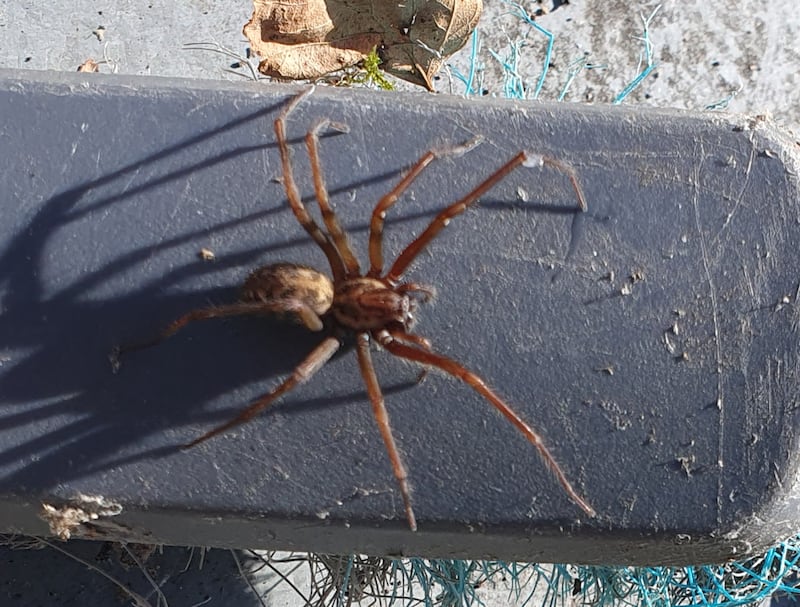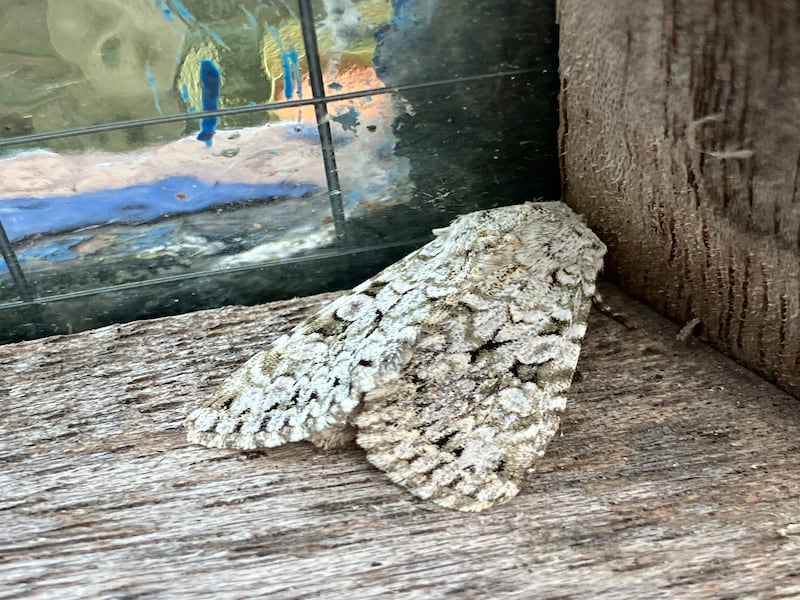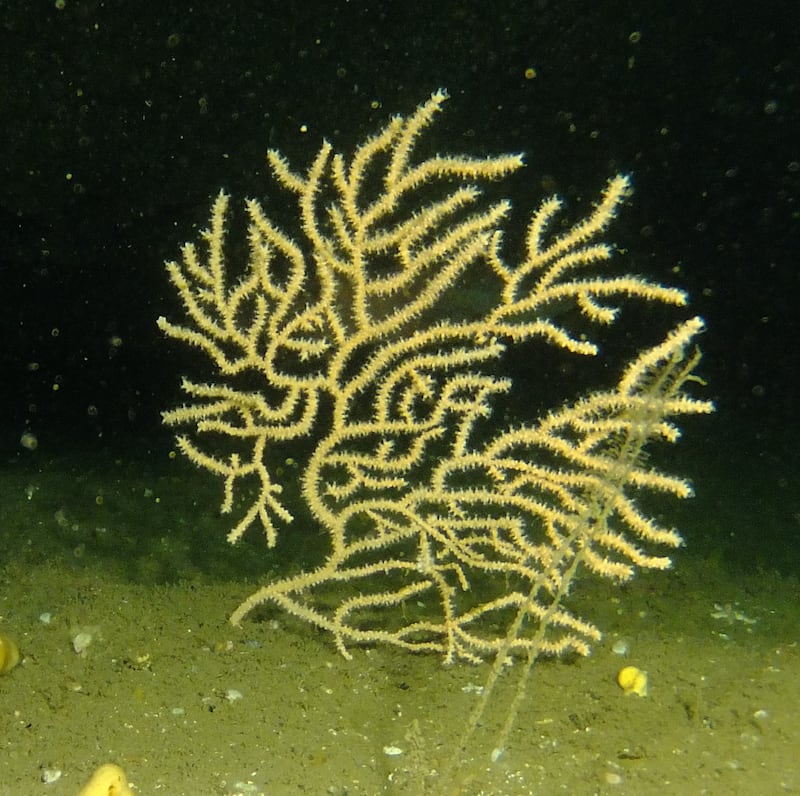This is a grey squirrel with a conker in Rockfield Park in Dublin. Ercus Long, Dublin
Squirrels collect and store nuts during the autumn so they have supplies for the winter. They do not hibernate, despite what Enid Blyton and other luminaries told us as children. Why on earth would they be collecting food stores if they were going to be asleep for four months? (Hedgehogs and bats don’t collect or store food.)
The squirrel better not eat this one, however: horse chestnuts contain aesculin, which causes them upset stomachs and in large enough amounts are very dangerous.

I found this quite sizeable spider while tidying my back garden. It is the biggest one I’ve ever seen here. I didn’t have anything to hand to measure it but managed to get it on to the back of a hand brush to show its relative size. My wife says she can see a skull on its back. Should I be concerned? Stephen O’Brien, Co Wexford
READ MORE
Concerned about the spider or your wife? This is one of the house spiders: the largest one, Eratigena duellica. The female can have a body length of up to 16mm, with legs more than twice as long again, so it is large. The markings on its back are technically described as a series of chevrons; those on its head (from which all the legs emanate) are apparently called dentate bands. The spider is, of course, harmless to us.

This moth with beautiful markings was resting on the inside ledge of my garage door. Is it a peppered moth? Siobhan Martin, Belfast
While the colours would remind you of the grey form of the peppered moth, it is the wrong time of year for it. This is the grey chi moth, which flies in September. It is so-called because of the bold cross-shaped black mark in the centre of the front wing, which has been likened to the Greek letter chi (Χ). The caterpillars feed on a wide variety of grassland wildflowers and the species overwinters as an egg.
[ Why is this slug looking particularly sluggish?Opens in new window ]

Is this a toad? He came into our diningroom. I encouraged him to go outside but he was in no hurry to move. When outside, he moved by walking but also took one or two small hops. He seemed relatively tame. Is his colouring distinctive? I thought toads were not common in Malahide. Tom Sheehy, Dublin
You thought right – in fact, toads are nonexistent in Malahide, it not being a native Irish species at all. We do have native natterjack toads, but they reside in Co Kerry. This is a large, fat frog.
According to Rob Gandola of the Herpetological Society, the recent warm and wet spell of weather has had native common frogs out en masse to stuff their faces full of worms, slugs and other creatures in order to pack in the calories and increase their body condition. This will prepare themselves for hibernation and give themselves the best chance at survival. Males and females look the same.

I first photographed this fan coral in June 2007 while scuba diving at St John’s Point in Donegal. The exact same fan coral was still in place when I went diving there again last month. They are so delicate and slow-growing that I am amazed it is still with us after all these years. Brendan Moran, Donegal
This is Eunicella verrucosa, the pink sea-fan, a cold-water coral species that occurs along the west coast of Europe as far north as Donegal. It may well spread further north as the ocean warms up with climate change.
Please submit your nature query, observation, or photo, with a location, via irishtimes.com/eyeonnature or by email to weekend@irishtimes.com













